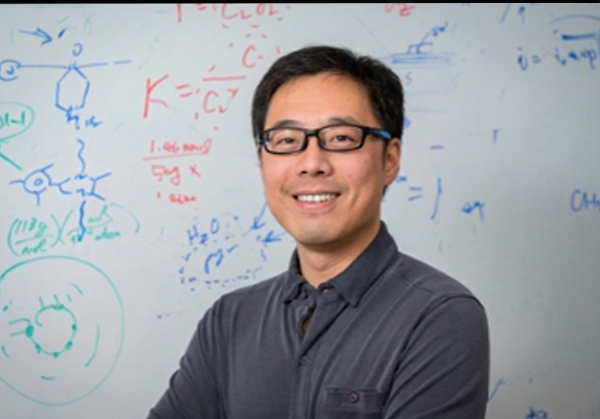Research Experience
2020/9 Professor,College of Chemistry and Molecular Engineering, Peking University
2019 – 2020 Centennial Development Associate Professor, Department of Chemical and Biomolecular Engineering, University of Delaware
2013 – 2019 Assistant Professor, Department of Chemical and Biomolecular Engineering, University of Delaware
2011 – 2013 Postdoctoral researcher, Chemical Engineering, California Institute of Technology
2011 Ph.D. in Physical Chemistry, Department of Chemistry and Chemical Biology, Harvard University
2007 M.S. in Physical Chemistry, Department of Chemistry, Fudan University
2004 B.S. in Physical Chemistry, Department of Chemistry, Fudan University
Awards
I&EC 2018 Class of Influential Researchers 2018
US National Science Foundation CAREER Award 2017
US Air Force Office of Scientific Research Young Investigator Award 2016
ACS Petroleum Research Fund Doctoral New Investigator Award 2015
University of Delaware Research Foundation Award 2015
Research Interests
The overarching goal of research of Xu lab is to develop efficient and selective heterogeneous thermo- and electro-catalytic materials and processes to enable the production of renewable energy and chemicals. Intellectually, we are curious about the how surface mediated processes enable the thermo- and electro-catalytic transformations on the molecular level. We employ and in many cases develop in-situ/operando spectroscopic techniques, in conjunction with kinetic investigations, to achieve mechanistic understanding. We are also interested in the design, synthesis and characterization of catalytic materials with unique architectures. Below are several directions that we are actively pursuing.
Catalyst design in renewable energy and green chemistry;
Mechanistic investigations of catalytic reactions at the gas-solid and liquid-solid interfaces;
Novel space and time resolved in-situ/operando techniques for interfacial studies.
Selected Publications
K. Zhao, M. Luo*, Y. Zhang, X. Chang, B. Xu*, “Coupled cation–electron transfer at the Pt (111)/perfluoro-sulfonic acid ionomer interface and its impact on the oxygen reduction reaction kinetics”, Nat. Catal., 8, 2025, 46.
Y. Xu, Z. Xia, W. Gao, H. Xiao*, B. Xu*, “Cation Effect on the Elementary Steps of Electrochemical CO Reduction Reaction on Cu”, Nat. Catal., 7, 2024, 1120.
Q. Sun, L. Fu, X. Chang*, B. Xu*, “Bridging activity gaps between batch and flow reactor configurations in the electroreduction of carbon dioxide”, Sci. Adv., 10, 2024, eadp5697.
H. Su, Y. Liu, H. Tian, D. Chen, Q. Shen, X. Chang, Q. Lu*, B. Xu*, “Selective C-H Bond Activation in Propane with Molecular Oxygen over Cu(I)-ZSM-5 at Ambient Conditions”, J. Am. Chem. Soc., 146, 2024, 17170.
H. Xiong, P. Yu, K. Chen, S. Lu, Q. Hu, T. Cheng*, B. Xu*, Q. Lu*, “Urea Synthesis via Electrocatalytic Oxidative Coupling of CO with NH3 on Pt”, Nat. Catal., 7, 2024, 785.
H. Tian, W. Li, L. He, Y. Zhong, S. Xu, H. Xiao, B. Xu*, “Rationalizing kinetic behaviors of isolated boron sites catalyzed oxidative dehydrogenation of propane”, Nat. Commun., 14, 2023, 6520.
W. Gao, Y. Xu, H. Xiong, X. Chang, Q. Lu, B. Xu*, “CO Binding Energy is an Incomplete Descriptor of Cu-Based Catalysts for the Electrochemical CO2 Reduction Reaction”, Angew. Chem. Int. Ed., 62,2023, e202313798.
W. Gao, Y. Xu, L. Fu, X. Chang, B. Xu*, “Experimental Evidence of Distinct Sites for CO2-to-CO and CO Conversion on Cu in the Electrochemical CO2 Reduction Reaction”, Nat. Catal., 6, 2023, 885.
H. Zhang, C. Li, W. Liu, G. Luo, W. Goddard III, M. Cheng, B. Xu*, Q. Lu*, “Activation of Light Alkanes at Room Temperature and Ambient Pressure”, Nat. Catal., 6, 2023, 666.
H. Xiong,Q. Sun, K. Chen, Y. Xu, X. Chang, Q. Lu*, B. Xu*, “Correlating the Experimentally Determined CO Adsorption Enthalpy with the Electrochemical CO Reduction Performance on Cu Surfaces”, Angew. Chem. Int. Ed., 62,2023, e202218447.

